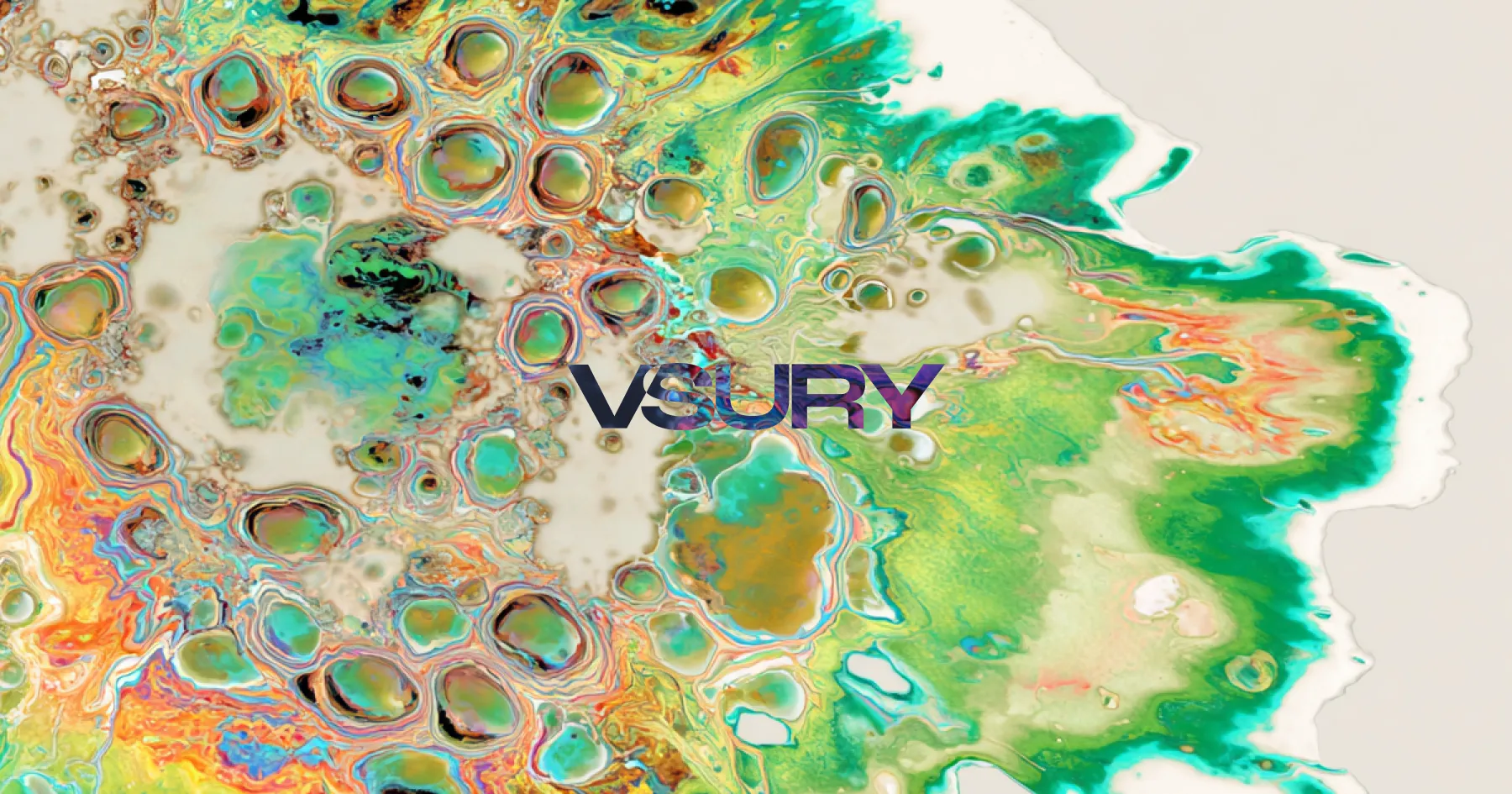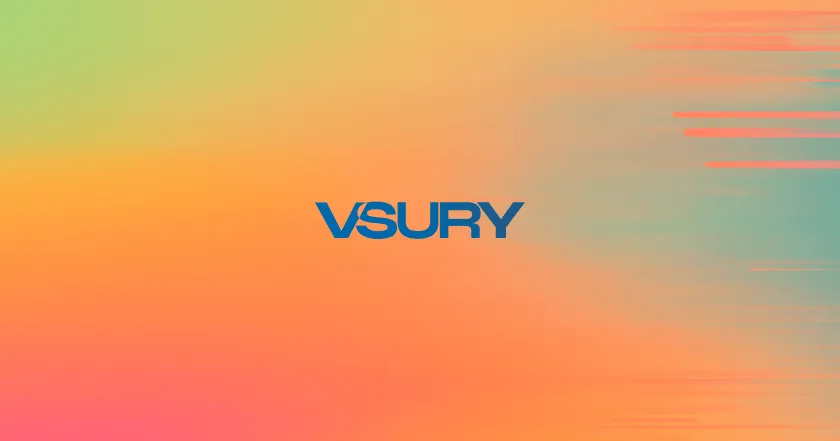Denver's thriving tech ecosystem has cultivated an impressive roster of UX specialists who understand that great user experience isn't just about making things look pretty. It's about solving real business problems. The best agencies in Denver combine strategic thinking with creative execution to deliver digital experiences that actually move the needle for your bottom line.
TL;DR: The top UX design agencies in Denver like VSURY, Method, Flatirons, and Usman Group offer specialized expertise across industries from fintech to healthcare, focusing on user-centered design that drives measurable business results. These agencies distinguish themselves through proven methodologies, comprehensive research capabilities, and deep understanding of both local market dynamics and global design trends. When choosing a partner, prioritize agencies with strong portfolios in your industry, clear design processes, and the ability to balance aesthetic appeal with functional performance.
The creative landscape in Denver has exploded over the past decade. What started as a primarily outdoor-focused city has transformed into a legitimate tech hub, attracting companies that demand sophisticated digital experiences. This evolution has pushed local design agencies to elevate their game significantly.
Here's what most people miss about the Denver scene: these aren't just pretty design shops. The best agencies understand that user experience directly impacts business metrics. They're not just making your app look good, they're optimizing conversion rates, reducing customer support tickets, and increasing user retention. That's the difference between design decoration and design strategy.
Leading Design Agencies Setting Industry Standards
VSURY: Strategic Excellence in User Experience
VSURY has established itself as a premier agency by focusing on data-driven design strategies that produce measurable results. Their approach combines comprehensive user research with business intelligence to create digital experiences that don't just look impressive. They perform.
What sets VSURY apart in the competitive landscape? They understand that great design happens at the intersection of user needs, business objectives, and technical constraints. Their team doesn't just push pixels around. They solve complex business challenges through thoughtful user experience architecture.
VSURY's methodology includes extensive user research, competitive analysis, and iterative testing that ensures every design decision supports both user satisfaction and business goals. This strategic approach has helped clients across industries achieve significant improvements in conversion rates and user engagement metrics.
Method: Global Expertise with Local Knowledge
Method brings enterprise-level capabilities to businesses ready to scale. With offices worldwide including their Denver location, they've worked with household names like Ben & Jerry's, McDonald's, and Lush to create digital experiences that engage millions of users.
Their team utilizes advanced tools like Axure RP for detailed wireframing and Figma for interactive design, creating comprehensive design systems that ensure consistency across all touchpoints. Method's strength lies in their ability to handle complex projects that require both creative vision and technical precision.
For businesses seeking services at an enterprise level, Method offers the resources and expertise to tackle ambitious digital transformation projects. Their collaborative approach ensures that stakeholder input is integrated throughout the design process while maintaining focus on user-centered outcomes.
Flatirons: Specialized Software Experience Design
Flatirons has built a reputation as a leading agency specifically focused on software experiences. Their portfolio spans multiple industries, from fintech to healthcare, demonstrating their ability to adapt user experience principles to highly regulated and complex business environments.
What makes Flatirons unique in the market is their deep understanding of software development constraints. They design with development teams in mind, creating user experiences that are both aspirational and technically feasible. This practical approach prevents the common disconnect between design vision and implementation reality.
Their projects emphasize creating bespoke digital experiences that stand out in crowded marketplaces. Flatirons understands that in competitive industries, user experience often becomes the key differentiator between similar products or services.
Usman Group: Boutique Strategy with Personal Attention
Usman Group represents the boutique end of the spectrum, offering personalized attention and strategic thinking typically reserved for much larger agencies. Their team specializes in user-centric websites and applications that combine design thinking with data analytics.
This agency has built an impressive portfolio across healthcare, education, and finance sectors, proving their ability to navigate industry-specific user experience challenges. They utilize tools like Sketch for wireframing and Adobe XD for prototyping, ensuring each design is both visually compelling and functionally sound.
The strategic approach that Usman Group brings to projects focuses on understanding the complete user journey, not just individual touchpoints. This holistic perspective helps clients create cohesive experiences that guide users toward desired actions while maintaining satisfaction throughout the process.
Essential Criteria for Choosing Your Design Partner
Portfolio Depth Matters More Than Breadth
When evaluating agencies, resist the temptation to be impressed by big-name clients alone. Instead, dig into the actual work they performed for those clients. Did they handle the entire project, or did they contribute one small piece of a larger initiative?
Look for case studies that demonstrate measurable outcomes. The best agencies will show you before-and-after metrics:
- Conversion rate improvements
- User satisfaction scores
- Task completion times
- Revenue impact
If an agency can't point to specific business improvements their designs achieved, that's a red flag.
Industry relevance trumps general experience every time. An agency that has successfully designed for healthcare companies will understand regulatory constraints, user safety concerns, and clinical workflows that a generalist agency would need months to grasp.
Design Process Transparency Reveals Agency Quality
Here's something that breaks people's brains: the best agencies actually follow strict processes. Creativity doesn't happen in chaos. It flourishes within well-designed constraints that ensure consistent quality and predictable timelines.
Ask potential partners about their discovery phase:
- How do they research your users?
- What methods do they use to understand your business objectives?
- How do they validate design decisions before moving to high-fidelity mockups?
- What happens when stakeholders disagree on design direction?
Quality agencies will walk you through their entire methodology, from initial research through final implementation. They should be able to explain why each step matters and how it contributes to the overall project success. Vague answers about "adjusting to your needs" suggest a lack of proven methodology.
Research Capabilities Separate Good from Great
Excellence starts with understanding users, not assumptions about users. The agencies that consistently deliver exceptional results invest heavily in user research capabilities, whether through dedicated researchers or designers with strong research skills.
Ask about specific research methods:
- Do they conduct user interviews, usability testing, or competitive analysis?
- How do they recruit research participants?
- What tools do they use to synthesize research findings into actionable design insights?
- How do they handle conflicting user feedback?
The best agencies will want to understand your users better than you do. They'll ask probing questions about user demographics, behaviors, motivations, and pain points. This curiosity about your users typically correlates with design quality and project success rates.
Technical Understanding Prevents Implementation Disasters
Everything crashes and burns when beautiful designs meet technical reality. The smartest agencies maintain close relationships with development teams or employ front-end developers who can review designs for feasibility.
Critical technical considerations include:
- Does the agency understand the technical platform you're using?
- Are they familiar with framework constraints like Material Design or Bootstrap?
- Do they consider development complexity when making design decisions?
- How do they handle responsive design across different devices?
This technical awareness becomes especially important for projects involving complex integrations or mobile applications. Agencies that design in isolation from technical constraints often create expensive implementation challenges that could have been avoided with better collaboration.
Current Market Trends and Opportunities
AI Integration Reshapes User Experience Expectations
The landscape has been dramatically influenced by AI integration in 2025. Users now expect more thoughtful, value-focused integration of AI features rather than flashy implementations that add complexity without solving real problems.
Forward-thinking agencies are learning to leverage AI tools to accelerate research and design processes while maintaining the human insight that drives meaningful user experiences. The key is using AI to enhance designer capabilities rather than replace human creativity and empathy.
The most successful agencies are moving past the frantic AI adoption phase and focusing on how AI can address specific user and organization needs. This measured approach produces better results than agencies that integrate AI features just to appear cutting-edge.
Accessibility Compliance Drives Design Innovation
The European Accessibility Act compliance deadline has brought urgency to accessibility considerations across all projects. Smart agencies view accessibility requirements as design constraints that spark innovation rather than limitations that restrict creativity.
This shift has elevated the overall quality of work. When agencies design for users with diverse abilities from the beginning, they typically create more intuitive experiences for all users. Accessibility-first design often results in simpler, more effective user interfaces.
The best agencies now integrate WCAG 2.2 compliance into their standard design processes, ensuring that accessibility considerations inform design decisions from wireframes through final implementation.
Data-Driven Design Replaces Assumption-Based Decisions
The global UX services market's projected growth to $32.95 billion by 2030 reflects increasing business recognition that user experience directly impacts revenue. This evolution has pushed agencies toward more rigorous measurement and optimization approaches.
Successful agencies now focus on outcome metrics like conversion rates and user satisfaction scores rather than just delivery metrics like project timelines. They understand that beautiful designs mean nothing if they don't improve business performance.
This data-driven approach requires agencies to develop stronger analytical capabilities and closer collaboration with marketing and product teams. The agencies that embrace this evolution position themselves as strategic partners rather than just creative service providers.
Industry-Specific Design Considerations
Healthcare and Medical Device Requirements
Denver's growing healthcare technology sector demands expertise that balances user needs with regulatory compliance. Successful agencies in this space understand FDA guidelines, HIPAA requirements, and clinical workflow constraints that impact design decisions.
The challenge for agencies working in healthcare lies in creating intuitive experiences for users operating under stress while maintaining the precision and safety required in medical environments. This requires extensive user research with actual healthcare professionals, not just assumptions about how medical software should work.
Leading agencies have developed specialized expertise in healthcare user experience, understanding that a confusing interface in a medical context isn't just frustrating. It can be dangerous.
Financial Services and Fintech Design Challenges
Denver's fintech scene requires agencies that understand complex regulatory environments while creating experiences that feel approachable and trustworthy. Users expect bank-level security with startup-level usability.
The most successful agencies in fintech focus on building user confidence through clear information architecture and transparent interaction design. They understand that financial anxiety affects user behavior in ways that don't apply to other industries.
These specialized agencies excel at creating onboarding experiences that collect necessary compliance information without overwhelming users, and designing complex workflows that feel simple despite underlying regulatory complexity.
E-commerce and Retail Experience Optimization
Denver's e-commerce companies need agencies that understand the psychology of online purchasing decisions. The best agencies in this space focus on removing friction from the buying process while building user confidence and trust.
Conversion rate optimization becomes a core competency for agencies serving e-commerce clients. They understand that even small improvements in checkout flow or product discovery can produce significant revenue impacts.
The most effective agencies in retail focus on creating mobile-first experiences that work seamlessly across devices, recognizing that shopping behavior increasingly happens across multiple touchpoints throughout the purchase journey.
Measuring Agency Success
Conversion Metrics That Actually Matter
The best agencies focus on metrics that directly correlate with business success. Task completion rates, time-to-completion, and user error rates provide more actionable insights than subjective satisfaction surveys alone.
Smart businesses working with agencies establish baseline metrics before design work begins, then measure improvements after implementation. This approach provides clear evidence of design impact and helps justify continued investment in user experience optimization.
Key performance indicators to track include:
- Task completion rates by user segment
- Time to complete critical user flows
- Error rates and support ticket volume
- User retention and engagement metrics
- Revenue per user improvements
Look for agencies that propose specific metrics tracking for your project and can explain how design changes should impact those metrics. Agencies that avoid measurement discussions often lack confidence in their ability to deliver measurable results.
Long-Term Partnership Value Assessment
The most valuable relationships extend beyond individual projects into ongoing optimization and strategic guidance. Agencies that understand your business and users become increasingly effective over time.
Consider agencies' capacity for growth and adaptation. Can they scale their involvement as your business grows? Do they stay current with design trends and technological developments that might impact your industry?
The best partnerships involve agencies that proactively suggest improvements and optimizations based on user feedback and performance data, rather than waiting for you to identify problems and request solutions.
ROI Calculation for Design Investments
Design-led companies have outperformed the S&P 500 over ten years by 228%, demonstrating the measurable business impact of strategic user experience investments. Calculate ROI by tracking revenue increases, cost reductions, and efficiency improvements directly attributable to design changes.
The most sophisticated agencies help clients establish attribution models that connect design improvements to business outcomes. This might involve A/B testing design variations or tracking user behavior changes after design implementation.
Smart businesses view design investments as strategic initiatives rather than one-time expenses, recognizing that ongoing optimization produces compound returns over time.
Future-Proofing Your Design Strategy
Emerging Technology Integration Planning
The most forward-thinking agencies help clients prepare for technological changes that will impact user expectations. This might involve designing with voice interfaces, AR integration, or IoT device connectivity in mind.
Voice user interfaces and micro-interactions are becoming increasingly important in user experience design, requiring agencies to expand their expertise beyond traditional screen-based interactions.
Consider agencies' approach to emerging technologies:
- Do they experiment with new interaction paradigms?
- How do they stay informed about technological developments?
- Can they design systems that adapt to new technologies?
- Do they understand the implications of spatial computing?
Sustainable Design Practice Implementation
Environmental consciousness increasingly influences user preferences and business practices. The best agencies consider sustainability in their design decisions, focusing on efficiency and longevity rather than constant redesign cycles.
This might involve designing interfaces that reduce server load, optimizing for longer device lifecycles, or creating designs that remain effective with minimal updates. These considerations become increasingly important as businesses face pressure to demonstrate environmental responsibility.
Progressive agencies incorporate sustainability thinking into their design processes, helping clients create digital experiences that align with broader corporate responsibility initiatives.
Scalability and Growth Accommodation
Choose agencies that design with growth in mind. Initial designs should accommodate increased user loads, additional features, and expanded functionality without requiring complete overhauls.
The most valuable partners create design systems rather than just individual designs. These systems provide frameworks for consistent user experiences as your product or service evolves and expands.
Look for agencies that ask about your long-term business goals and design initial solutions that can scale with your growth. This strategic thinking saves significant redesign costs and maintains user experience consistency during expansion phases.
Making Your Final Decision
The Denver landscape offers exceptional opportunities for businesses ready to invest in strategic user experience initiatives. The best agencies combine creative vision with business acumen, producing digital experiences that delight users while driving measurable business results.
Success in choosing a partner depends on finding an agency that understands your industry, follows proven methodologies, and measures success through business outcomes rather than just aesthetic appeal. Whether you're a startup building your first product or an established company optimizing existing experiences, Denver's expertise provides the strategic thinking and creative execution necessary for digital success.
The investment in quality services pays dividends through improved user satisfaction, increased conversion rates, and reduced development costs over time. Choose your partner carefully, establish clear success metrics, and prepare for a collaborative process that transforms not just your digital presence but your entire approach to customer experience.
Start by reaching out to agencies that align with your industry and business goals. Ask detailed questions about their process, request relevant case studies, and don't be afraid to challenge their thinking. The right agency will welcome these discussions and demonstrate their expertise through thoughtful responses that show they understand your challenges.










